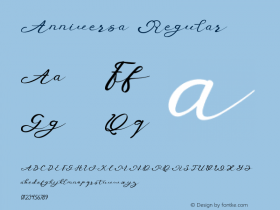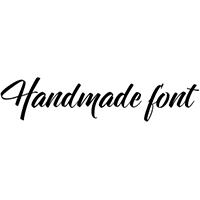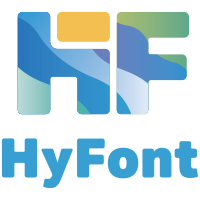FIFTY|1: The New FontFont Release Magazine, Double Issue 50/51

Do you remember the original Beowolf, a font whose characters constantly changed their appearance due to a random function in PostScript? Erik van Blokland and Just van Rossum created this "living" font as early as 1989, and a little later FF Beowolf laid the foundation for the FontFont Typeface Library, currently celebrating its 20th anniversary.
Actually, the legendary FF Beowolf already represented the most important elements of the FontFont philosophy: aesthetic quality, technical finesse, esprit, and bold experimentation. Almost all the typefaces published subsequently – such as FF Scala, FF Meta and FF Hands – adhered to these principles, yet there neither was a mission statement nor a strict typographic concept for the young venture at that time. So why did all the fonts from the first years seem to be cut from the same cloth?
Quite simply – because the FontFont Library was one of the first exclusively digital type collections. The designers submitted their designs directly in digitised form. This was a novel approach at the time and turned FontFont into a quickly growing type library, currently numbering more than 600 type families. Our type designers also have been type users, which explains the FontFont slogan "For designers by designers". Most typefaces were originally designed for private use, in order to solve a specific design problem, or to fill a gap in the existing font offerings. Is there a better incentive for designing useful typefaces?
No doubt, FontFonts became known for their design standards, but nowadays fonts are not only used by designers anymore. To meet the requirements of users working with typical Office applications we developed state-of-the-art Office FontFonts. 30 of our most important type families are now available as Office versions; the complete library is currently reworked and converted into the Office format – explore the details of this new format on the following pages.
The two new FORTY9).
You candownload the FIFTY|1 Release Mag PDF here(18MB), or browse it on Issuu. Enjoy.
TTF vs. CFF – Everything is OpenType
Graphic designers rely onOpenType FontFontsfor their typographic features and operability with professional apps like Adobe CS® and QuarkXPress®. But software like Microsoft® Office isn't capable of accessing all the features and glyphs of these PostScript-flavoured (CFF) OpenType fonts. FSI is answering the call with a special kind of OpenType fonts:Office FontFonts.One of the most significant differences is their outline format – instead of PostScript they have TTF outlines, so we just call them TrueType-flavoured (TTF) OpenTypes.

Sincescreen-optimizationis an important issue in this environment we improved the hinting of our fonts once again, following the most current standards. Office FontFonts are optimized for the use with ClearType that is available from Microsoft Windows XP and the standard way of type smoothing since Windows Vista.
Both OpenType formats are based on Unicode and contain all the glyphs within onesingle font file. The difference is that Office FontFonts are style-linked, grouped together under a single item in the font menu. When working with Office apps you can access the familiar and easy-to-use key commands and toolbars to switch to bold, italic or bold italic.Tabular lining figures, which are more common for Office users, are the default figure set. Small caps with proportional oldstyle figures are also available, but asseparate fonts.
Just like their 'OT' companions, 'Offc' fonts cover 50 Western languages such as English, French, Spanish and German. 'Offc Pro' fonts offer support of many more Latin-based languages (e.g. Czech, Turkish, Hungarian, Latvian). Many Office Pro fonts also speak Cyrillic and/or Greek. Because of the style-linking you can get them in a Basic Set (Regular, Italic, Bold and Bold Italic) or as pairs of upright fonts with their italic companion when available.

Although Office FontFonts are the best choice for all who work with the widely-used Office apps like Word®, Excel® and PowerPoint®, they are compatible with nearly every kind of software. If the software can handle a .ttf, it can handle an Office FontFont. Finally, everyone can benefit from the cross-platform compatibility and ease of use the OpenType format provides.
You can find all of the Offc FontFonts here or in the FIFTY|1 PDF.

































 闽公网安备35010202000240号
闽公网安备35010202000240号